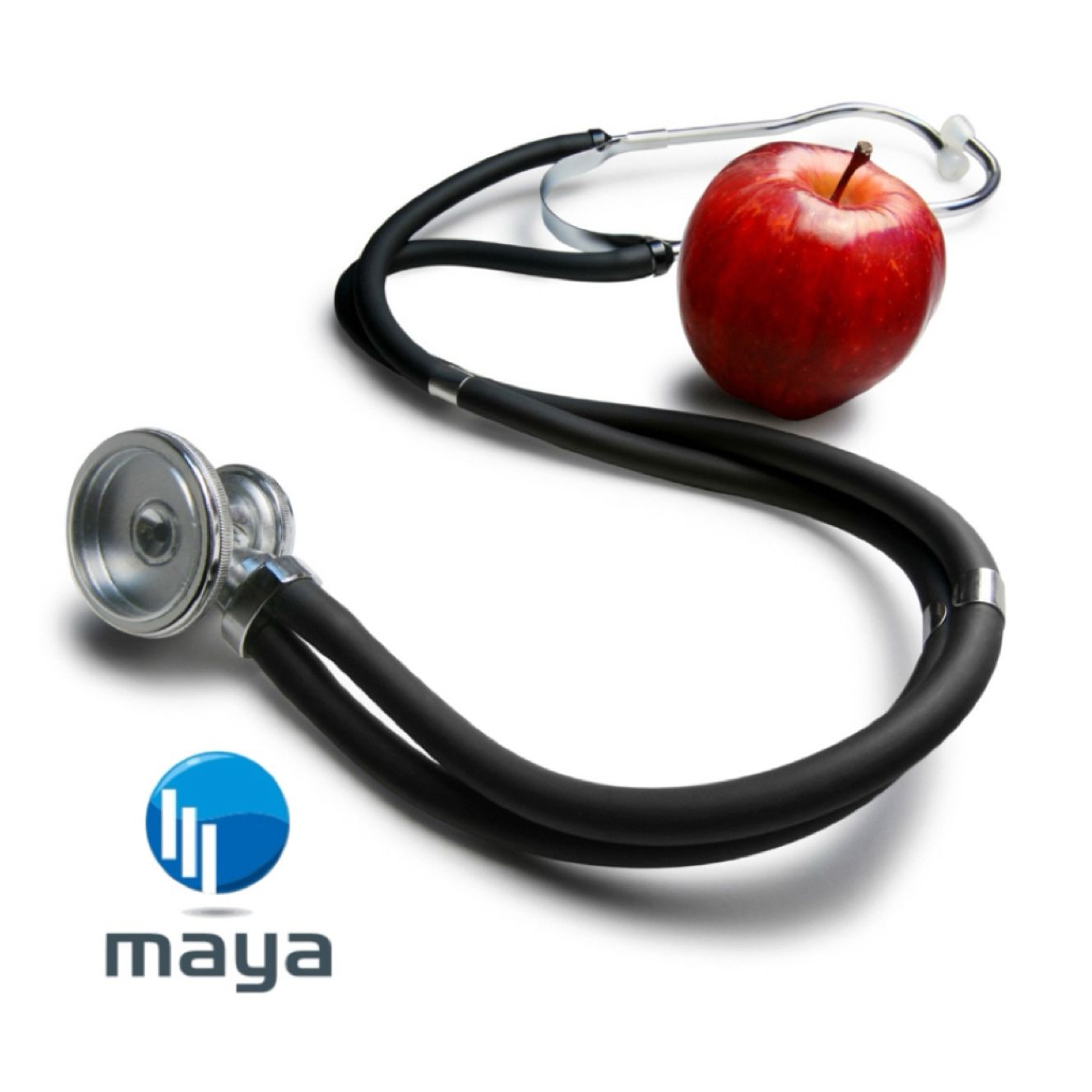Comparison of Paid Doctor Consultation Services vs Dr. Maya GPT.
1. Nature of Interaction
Paid doctor consultations listed in website gives users immediate access to licensed doctors for virtual or phone consultations. During the session, they will deliver user-specific diagnoses and treatment strategies. Frequently, the conversation is focused on symptoms, with little emphasis on teaching the user about prevention or management.
Doctor Maya GPT Instead of delivering a precise diagnosis, it walks users through symptom combinations. It encourages people to take preventive steps, control their lives, and make educated decisions. It focuses on providing people with information rather than simply solving current difficulties.
2. Cost
Paid doctor consultations costs range from a flat fee per session to monthly memberships, making it relatively expensive. Some systems may impose hidden fees for follow-ups or additional exams.
Doctor Maya GPT It is a cost-effective or complementary solution for lowering unnecessary medical costs. Access to Dr Maya GPT remails free, but App and website intigrated with ChatGPT help users to create appropriate promts, by presnting a list of types to choose so that ChatGPT receives combination of symptoms to find the relevent information, and offer advice using the Colour-coded combinations and Notifying users about the severity of their symptoms and the need for expert assistance can help us avoid excessive expenses.
3. Purpose and outcome
Paid doctor consultations resolution to health concerns by medication or comfort. It primarily addresses immediate difficulties without focusing on long-term health literacy or prevention.
Dr Maya GPT focuses on detecting severe illnesses and infections early to reduce risks and eliminate unnecessary medical visits. The application educates users on symptom patterns, allowing them to make more informed health decisions.
4. Accessibility
Paid doctor consultations method requires scheduling or waiting for available slots, which may sometimes delay immediate care. Access is contingent upon internet connectivity and the availability of licensed doctors.
Dr Maya GPT provides immediate counsel at any time without requiring in-person discussions. It supports users in taking immediate action to control their symptoms, such as isolating themselves or contacting a healthcare expert.
5. Approach to Diagnosis:
Paid doctors interpretation of symptoms is dependent on the doctor's knowledge, experience and so the advice and information user receives may be not updated. If the user fails to offer adequate context, there is a risk of overprescription or over treatment.
Doctor Maya GPT methodology uses a rigorous, colour-coded approach to determine the urgency of symptoms while avoiding over diagnosis. The goal is to limit antimicrobial resistance and avoid using unneeded antibiotics. The information offerd is updated and so consitant and standardised.
6. Prevention of Cross-infection
Paid doctor virtual consultations reduce cross-infection, in-person diagnostics or follow-ups may increase exposure hazards.
Doctor Maya GPT promotes isolation and other precautions when detecting infectious diseases, limiting population spread.
Benefits of Using Dr. Maya GPT Instead of Paid Doctor Consultations
Cost-effective: It saves money by preventing unneeded doctor visits and tests.
Prevention-oriented: Provides proactive recommendations to reduce the risk of infection and long-term consequences.
Empowerment: Provides consumers with the knowledge to confidently control their health, decreasing reliance on professionals.
Reduced Anxiety: Provides clarity and actionable methods to address problems without the pressure of immediate costs.
Global Accessibility: This feature is handy for users who live in distant or underserved locations with limited access to healthcare practitioners.
Dr. Maya's GPT uses cost, education, and a proactive approach to close the gap between healthcare access and good symptom management.
Comparison table outlining the key differences
Dr. Maya App Integrated with ChatGPT and Websites Offering "Speak to a Doctor" Services, which can often lead to increased anxiety and unnecessary encouragement for face-to-face consultations:
Feature | Dr. Maya App Integrated with ChatGPT | Websites Offering "Speak to a Doctor" Services |
Interaction Style | Conversational and AI-driven, allowing users to interact at their own pace and on their own terms. | Real-time interactions with live doctors, often through text, chat, or video calls. |
Response to Anxiety | Aims to reduce anxiety by providing clear, calm, and informative responses, offering suggestions and explaining potential causes of symptoms. | Can unintentionally increase anxiety by quickly escalating concerns, leading to unnecessary consultations or tests. |
Consultation Pressure | Does not pressure users into seeking in-person consultations. Encourages self-management and professional consultation only when necessary. | Often pressures users into seeking face-to-face consultations even when it's not required, potentially exaggerating the need for immediate medical intervention. |
Diagnostic Approach | Offers a range of possible diagnoses, while emphasizing that it's not a replacement for a professional diagnosis. It prioritizes educating the user. | Often encourages users to speak to a doctor for a definitive diagnosis, even for non-serious or minor symptoms, increasing the likelihood of unnecessary consultations. |
Cost Considerations | Free or low-cost access to preliminary advice, with no pressure to pay for in-person consultations. | Paid services that may pressure users to book consultations, even when an in-person visit isn't necessary. |
Focus on Empowerment | Provides detailed, accessible explanations, helping users understand their symptoms and what steps to take next (e.g., wait, monitor, consult a professional if needed). | Tends to quickly push users toward professional consultations, without providing enough information to help them manage symptoms on their own. |
Emotional Support | Designed to reduce uncertainty and offer reassurance through knowledge, helping users feel more in control of their health decisions. | Can inadvertently cause heightened emotions or anxiety by presenting symptoms as more urgent than they may actually be. |
Medical Expertise | Developed with medical expertise, but emphasizes that it's not a substitute for professional diagnosis. Recommendations are non-urgent and educational. | Generally relies on real-time doctors to diagnose, often leading to urgent recommendations for face-to-face visits even for minor issues. |
Use Case | Best for individuals looking for preliminary advice and information, without the immediate pressure of face-to-face consultations. | Best for individuals who prefer live consultation, but it often escalates situations unnecessarily, leading to unnecessary visits or tests. |
User Empowerment and Autonomy | Encourages users to make informed decisions based on clear, evidence-backed advice, empowering them to self-manage minor issues. | Often disempowers users by making them feel that they must see a doctor in person, even for mild symptoms, reducing their ability to self-manage. |
Privacy and Data Security | Privacy-conscious, with secure storage of data, and often complies with regulations like HIPAA to protect personal health information. | Privacy policies vary, but some services may not have the same level of data security or transparency as more regulated platforms. |
Pressure for Face-to-Face Consultations | Does not explicitly push users toward face-to-face consultations unless it's clinically appropriate. Offers alternative next steps, such as monitoring symptoms or seeking non-urgent care. | Often encourages or recommends face-to-face consultations as the next step, even if it is not clinically necessary, which may contribute to unnecessary visits. |
Pacing of Advice | Allows users to pace their interactions, returning for more information as needed, without immediate pressure for a decision. | Fast-paced, with immediate doctor interactions that can feel rushed and press users to make quick decisions about consultations. |
Accessibility | Available 24/7, providing consistent support without waiting for appointment slots or availability of a doctor. | Dependent on doctor availability, often requiring scheduled appointments or having limited hours of operation. |
Risk of Over-Diagnosis or Over-Treatment | Less likely to over-diagnose or over-treat; focuses on suggesting next steps without pushing for unnecessary treatments or visits. | Higher risk of over-diagnosis or over-treatment due to the emphasis on immediate professional intervention and face-to-face consultations. |
Reliability of Information | Provides evidence-based suggestions and updates in real-time to reflect current medical research, ensuring accurate advice. | Medical advice may vary based on the individual doctor and is often more focused on immediate treatment rather than holistic or long-term management. |
Flexibility in Response | More flexible in accommodating a variety of health concerns, and adjusts based on user input, tailoring advice to individual circumstances. | Less flexible; typically follows a predefined medical script and responds according to the initial symptoms, often focusing on a narrow set of possibilities. |
Summary of Differences:
Dr. Maya App Integrated with ChatGPT offers a calmer, more empowering experience that educates users and helps them understand their symptoms without escalating anxiety. It encourages users to seek professional care only when necessary, offering flexibility and a non-urgent, self-management-focused approach.
Websites Offering "Speak to a Doctor" Services often escalate concerns quickly, pressuring users into seeking in-person consultations even for mild or non-serious symptoms. This can result in unnecessary face-to-face visits and treatments, increasing anxiety and sometimes contributing to over-diagnosis or over-treatment.
In essence, Dr. Maya provides more nuanced, non-urgent advice that helps users feel in control, while "speak to a doctor" services tend to promote face-to-face consultations as the default, potentially leading to unnecessary anxiety and medical interventions

